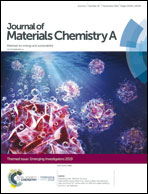Hydrogen-bonded diketopyrrolopyrrole derivatives for energy-related applications
Abstract
Since the discovery of the diketopyrrolopyrrole (DPP) dye in the 70s it has been one of the most used pigments in industrial applications and in the search for new materials. They are great electroactive molecules extensively studied in the field of organic electronics thanks to their optoelectronic properties that arise from the conjugated core and the functionalization in the 3- and 6-positions. DPP properties can be regulated synthetically by introducing different substituents or by tuning the aggregation using noncovalent interactions, such as hydrogen-bonding (H-bonding) in combination with π–π stacking. This review outlines the advances made in organic electronics using H-bonding functionalization on DPP derivatives. The examples of H-bonded DPPs using amide groups in their structures and the functionalization with other H-bonding motifs in various positions of the molecule will be discussed. The influence of such noncovalent interactions on the optoelectronic properties, and the correlation with the morphology and the results obtained in different energy-related applications will be reviewed.

- This article is part of the themed collections: Recent Review Articles and Journal of Materials Chemistry A Emerging Investigators


 Please wait while we load your content...
Please wait while we load your content...